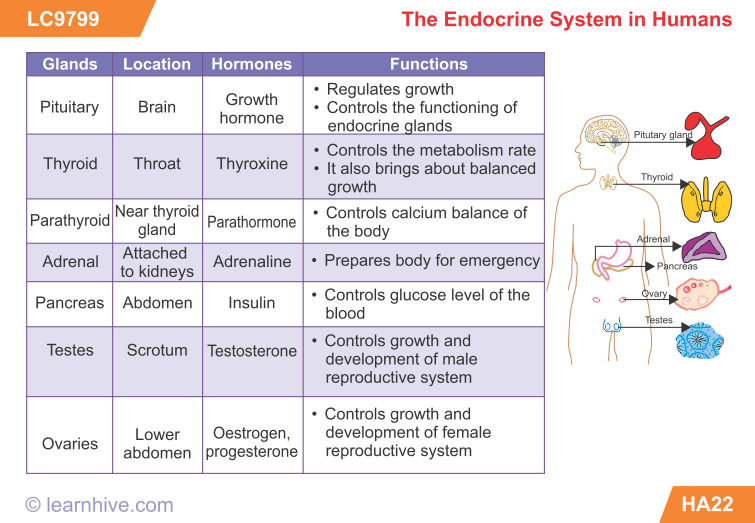Human glands and their functions. The Endocrine System: Glands, Functions, and Disorders Explained
How does the endocrine system regulate bodily functions. What are the main glands in the human body and their roles. Which common disorders affect the endocrine system. How do hormones impact health and development.
Understanding the Endocrine System: A Network of Hormone-Producing Glands
The endocrine system is a complex network of glands that produce and secrete hormones directly into the bloodstream. These hormones act as chemical messengers, regulating various bodily functions and maintaining homeostasis. By understanding the intricacies of this system, we can gain valuable insights into our overall health and well-being.
Are glands and organs the same thing? While all glands are organs, not all organs are glands. Glands are specialized organs that produce and release substances for specific functions in the body. The endocrine system consists of several glands that work together to maintain proper bodily functions.
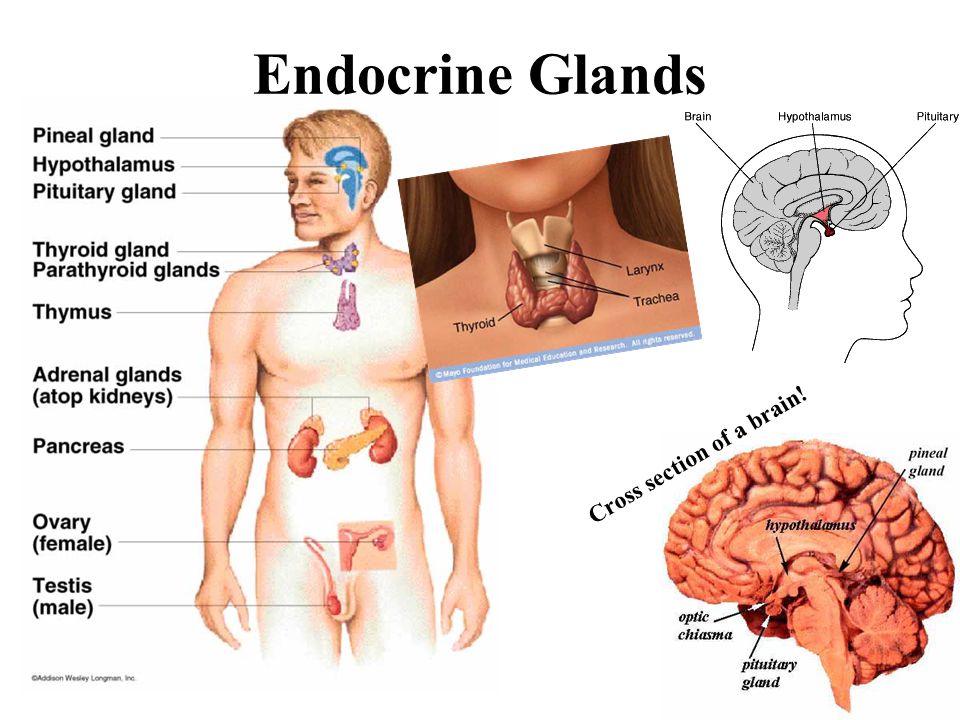
The Major Endocrine Glands and Their Functions
The endocrine system comprises several glands, each with unique functions and hormone production. Let’s explore the main glands and their roles in maintaining our health:
1. Hypothalamus: The Master Controller
The hypothalamus acts as a bridge between the endocrine and nervous systems. Its primary function is to regulate the pituitary gland, often called the “master gland” of the endocrine system. The hypothalamus produces releasing and inhibiting hormones that control the pituitary’s hormone production.
2. Pituitary Gland: The Conductor of the Endocrine Orchestra
Located at the base of the brain, the pituitary gland is often referred to as the “master gland” due to its control over other endocrine glands. It produces several crucial hormones, including:
- Growth hormone (GH): Stimulates growth and cell reproduction
- Prolactin: Promotes milk production in breastfeeding mothers
- Adrenocorticotropic hormone (ACTH): Stimulates the adrenal glands
- Thyroid-stimulating hormone (TSH): Regulates thyroid function
- Follicle-stimulating hormone (FSH) and Luteinizing hormone (LH): Control reproductive functions
3. Thyroid Gland: The Metabolism Regulator
The thyroid gland, located in the neck, produces hormones that regulate metabolism, growth, and development. The two main thyroid hormones are:
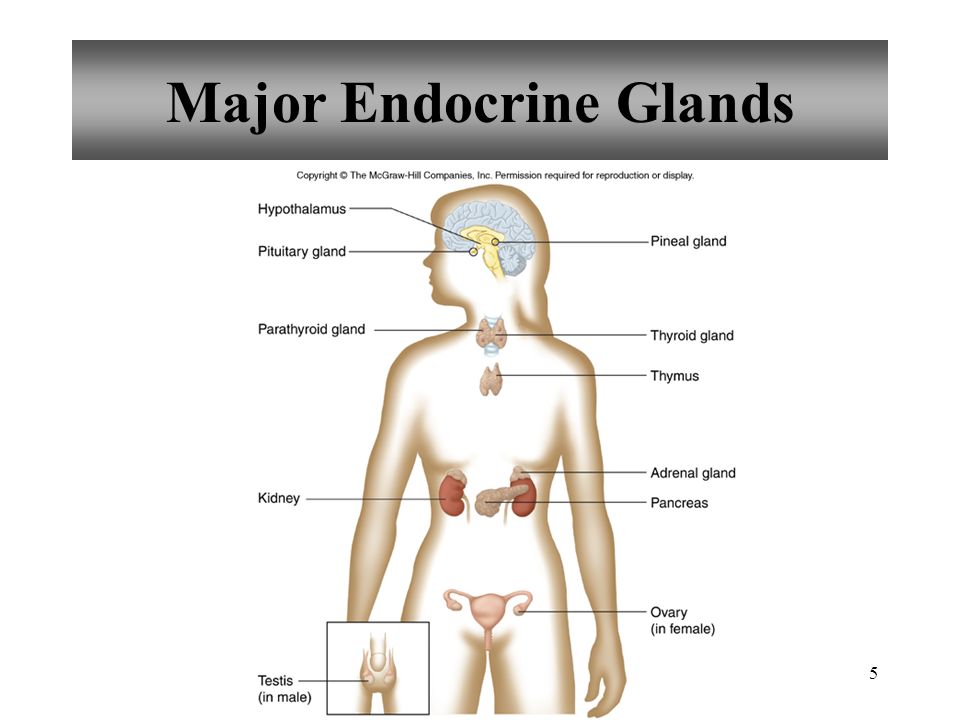
- Thyroxine (T4)
- Triiodothyronine (T3)
These hormones influence heart rate, body temperature, and energy expenditure. The thyroid also produces calcitonin, which helps regulate calcium levels in the blood and bones.
4. Parathyroid Glands: Calcium Balance Guardians
Four small parathyroid glands are located behind the thyroid gland. They produce parathyroid hormone (PTH), which regulates calcium and phosphorus levels in the blood and bones. PTH works in conjunction with calcitonin from the thyroid to maintain optimal calcium balance.
5. Adrenal Glands: Stress Response Managers
The adrenal glands, situated atop the kidneys, produce hormones that help the body respond to stress and regulate various bodily functions. The adrenal glands consist of two parts:
- Adrenal cortex: Produces cortisol, aldosterone, and small amounts of sex hormones
- Adrenal medulla: Secretes epinephrine (adrenaline) and norepinephrine
6. Pancreas: Blood Sugar Regulator
The pancreas serves both endocrine and exocrine functions. As an endocrine gland, it produces insulin and glucagon, which regulate blood sugar levels. Insulin lowers blood glucose by promoting its uptake into cells, while glucagon raises blood glucose by stimulating the liver to release stored glucose.

7. Reproductive Glands: Ovaries and Testes
The ovaries in females and testes in males are responsible for producing sex hormones and gametes (eggs and sperm). These glands play crucial roles in sexual development, reproduction, and maintaining secondary sexual characteristics.
Hormones: The Chemical Messengers of the Endocrine System
Hormones are the primary products of the endocrine system, acting as chemical messengers that regulate various bodily functions. How do hormones work in the body? Hormones are released into the bloodstream and travel to target cells or organs, where they bind to specific receptors and trigger cellular responses.
Some key hormones and their functions include:
- Insulin: Regulates blood sugar levels
- Cortisol: Manages stress response and metabolism
- Estrogen and Progesterone: Regulate female reproductive functions
- Testosterone: Controls male reproductive functions and muscle development
- Melatonin: Regulates sleep-wake cycles
- Growth hormone: Stimulates growth and cell reproduction
Endocrine System Disorders: When Hormones Go Awry
Endocrine disorders occur when glands produce too much or too little of a hormone, or when the body doesn’t respond properly to hormones. Some common endocrine disorders include:

1. Diabetes Mellitus
Diabetes is a group of metabolic disorders characterized by high blood sugar levels. The two main types are:
- Type 1 Diabetes: The pancreas produces little or no insulin
- Type 2 Diabetes: The body becomes resistant to insulin or doesn’t produce enough
2. Thyroid Disorders
Thyroid disorders can result in either overproduction (hyperthyroidism) or underproduction (hypothyroidism) of thyroid hormones. Common thyroid disorders include:
- Graves’ Disease: An autoimmune disorder causing hyperthyroidism
- Hashimoto’s Thyroiditis: An autoimmune condition leading to hypothyroidism
- Thyroid Nodules: Abnormal growths in the thyroid gland
3. Adrenal Disorders
Adrenal gland disorders can affect cortisol and aldosterone production. Examples include:
- Addison’s Disease: Insufficient production of adrenal hormones
- Cushing’s Syndrome: Excessive cortisol production
4. Pituitary Disorders
Disorders of the pituitary gland can affect the production of various hormones. Some examples are:

- Acromegaly: Excessive growth hormone production in adults
- Hypopituitarism: Underproduction of one or more pituitary hormones
Maintaining Endocrine Health: Lifestyle Factors and Preventive Measures
While some endocrine disorders are genetic or unavoidable, there are steps we can take to support overall endocrine health:
- Balanced Diet: Consume a variety of nutrients to support hormone production and function
- Regular Exercise: Physical activity helps regulate hormone levels and improves insulin sensitivity
- Stress Management: Chronic stress can disrupt hormone balance, so practice stress-reduction techniques
- Adequate Sleep: Sleep is crucial for hormone regulation, particularly growth hormone and melatonin
- Limit Endocrine Disruptors: Minimize exposure to chemicals that can interfere with hormone function
- Regular Check-ups: Schedule routine health screenings to detect potential endocrine issues early
The Interplay Between the Endocrine System and Other Body Systems
The endocrine system doesn’t operate in isolation; it interacts closely with other body systems to maintain overall health and homeostasis. How does the endocrine system interact with other body systems? Let’s explore some key relationships:
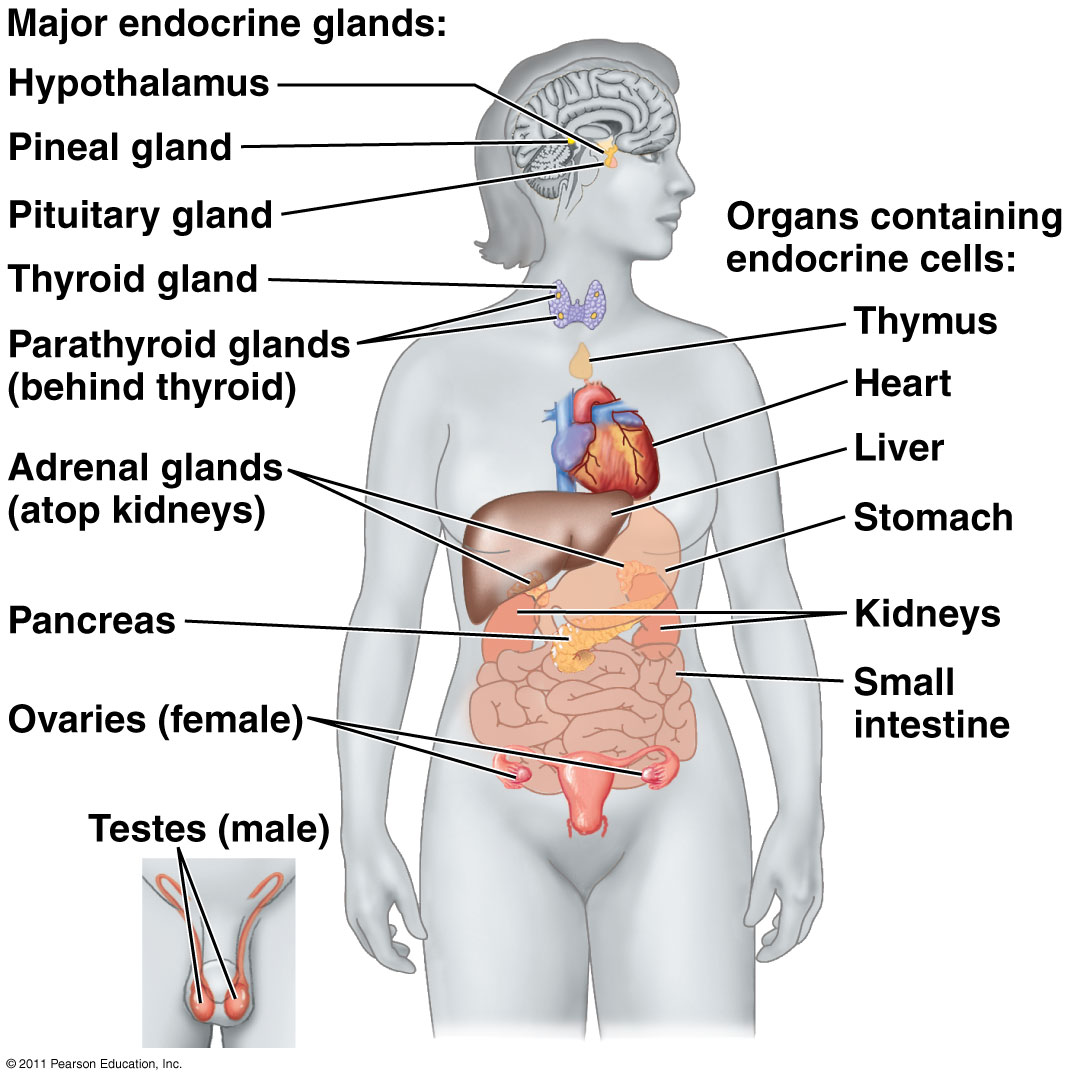
Endocrine and Nervous Systems
The endocrine and nervous systems work together to regulate bodily functions. While the nervous system uses electrical impulses for rapid communication, the endocrine system employs hormones for slower, longer-lasting effects. The hypothalamus serves as a crucial link between these two systems.
Endocrine and Immune Systems
Hormones play a significant role in modulating immune function. For example, cortisol, produced by the adrenal glands, has anti-inflammatory effects and can suppress immune responses. Conversely, certain immune cells can produce hormones, demonstrating a bidirectional relationship between these systems.
Endocrine and Reproductive Systems
The endocrine system is intimately involved in reproductive functions. Sex hormones produced by the ovaries and testes regulate sexual development, fertility, and reproductive cycles. The hypothalamic-pituitary-gonadal axis coordinates these processes.
Emerging Research and Future Directions in Endocrinology
The field of endocrinology is continually evolving, with new discoveries and treatment approaches emerging. Some exciting areas of research include:
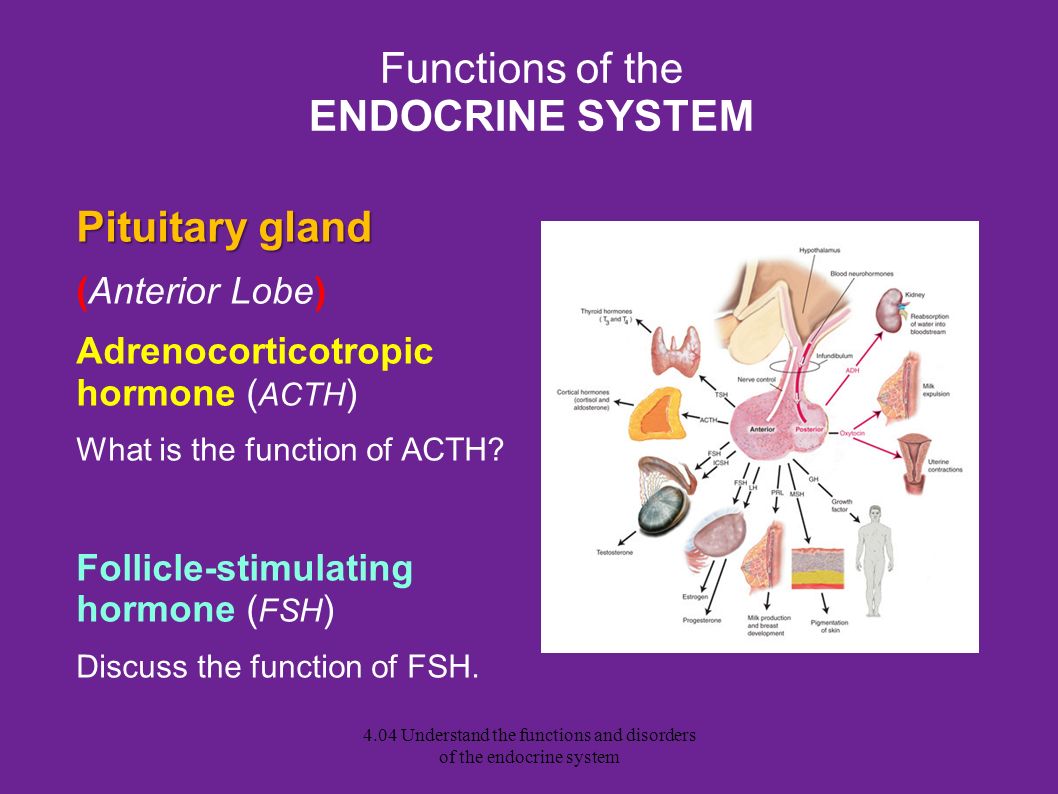
1. Endocrine Disruptors
Scientists are investigating the long-term effects of environmental chemicals that can interfere with hormone function. This research may lead to new regulations and strategies to minimize exposure to these compounds.
2. Hormone Replacement Therapies
Ongoing studies are exploring more targeted and personalized approaches to hormone replacement, particularly for menopausal women and individuals with endocrine disorders.
3. Artificial Pancreas Technology
Advancements in continuous glucose monitoring and insulin delivery systems are bringing us closer to developing a fully automated artificial pancreas for diabetes management.
4. Endocrine-Immune Interactions
Researchers are delving deeper into the complex relationships between hormones and the immune system, which may lead to new treatments for autoimmune disorders and cancer.
5. Chronobiology and the Endocrine System
Studies on circadian rhythms and their impact on hormone production are providing insights into optimizing hormone therapy timing and improving overall health.

Diagnostic Tools and Treatment Approaches in Endocrinology
Endocrinologists employ various diagnostic tools and treatment approaches to manage endocrine disorders. What are the common methods for diagnosing and treating endocrine disorders? Let’s explore some key aspects:
Diagnostic Tools
- Blood Tests: Measure hormone levels in the bloodstream
- Stimulation and Suppression Tests: Assess gland function by observing hormone responses to specific stimuli
- Imaging Studies: Include ultrasound, CT scans, and MRI to visualize gland structure
- Genetic Testing: Identify hereditary endocrine disorders
Treatment Approaches
- Hormone Replacement Therapy: Supplements deficient hormones
- Medications: Manage hormone production or receptor sensitivity
- Surgery: Remove tumors or dysfunctional glands
- Lifestyle Modifications: Dietary changes, exercise, and stress management
- Radiation Therapy: Treat certain types of endocrine tumors
As our understanding of the endocrine system grows, so does our ability to diagnose and treat endocrine disorders more effectively. The complex interplay between hormones and various bodily functions continues to fascinate researchers and clinicians alike, promising exciting developments in the field of endocrinology.

The Endocrine System and Glands of the Human Body: Function and Disorders
Written by Barbara Brody
- What Is the Endocrine System?
- What Is a Gland?
- Endocrine System Functions
- Parts of the Endocrine System
- Health Issues
- Endocrine System Disorders
- More
The endocrine system is a network of glands in your body that make the hormones that help cells talk to each other. They’re responsible for almost every cell, organ, and function in your body.
If your endocrine system isn’t healthy, you might have problems developing during puberty, getting pregnant, or managing stress. You also might gain weight easily, have weak bones, or lack energy because too much sugar stays in your blood instead of moving into your cells where it’s needed for energy.
A gland is an organ that makes and puts out hormones that do a specific job in your body. Endocrine and exocrine glands release the substances they make into your bloodstream.
Your endocrine system:
- Makes hormones that control your moods, growth and development, metabolism, organs, and reproduction
- Controls how your hormones are released
- Sends those hormones into your bloodstream so they can travel to other body parts
Many glands make up the endocrine system. The hypothalamus, pituitary gland, and pineal gland are in your brain. The thyroid and parathyroid glands are in your neck. The thymus is between your lungs, the adrenals are on top of your kidneys, and the pancreas is behind your stomach. Your ovaries (if you’re a woman) or testes (if you’re a man) are in your pelvic region.
- Hypothalamus. This organ connects your endocrine system with your nervous system. Its main job is to tell your pituitary gland to start or stop making hormones.
- Pituitary gland. This is your endocrine system’s master gland. It uses information it gets from your brain to tell other glands in your body what to do.
 It makes many important hormones, including growth hormone; prolactin, which helps breastfeeding moms make milk; antidiuretic hormone(ADH) (vasopressin), which controls blood pressure and helps control body water balance through its effect on the kidney, corticotropin /ACTH: Adrenocorticotrophic hormone. which stimulates the adrenal gland to make certain hormones, thyroid-stimulating hormone (TSH), which stimulates the production and secretion of thyroid hormones, oxytocin which helps in milk ejection during breast feeding; and luteinizing hormone, which manages estrogen in women and testosterone in men.
It makes many important hormones, including growth hormone; prolactin, which helps breastfeeding moms make milk; antidiuretic hormone(ADH) (vasopressin), which controls blood pressure and helps control body water balance through its effect on the kidney, corticotropin /ACTH: Adrenocorticotrophic hormone. which stimulates the adrenal gland to make certain hormones, thyroid-stimulating hormone (TSH), which stimulates the production and secretion of thyroid hormones, oxytocin which helps in milk ejection during breast feeding; and luteinizing hormone, which manages estrogen in women and testosterone in men. - Pineal gland. It makes a chemical called melatonin that helps your body get ready to go to sleep.
- Thyroid gland. This gland makes thyroid hormone, which controls your growth and metabolism. If this gland doesn’t make enough (a condition called hypothyroidism), everything happens more slowly. Your heart rate might slow down.
 You could get constipated. And you might gain weight. If it makes too much (hyperthyroidism), everything speeds up. Your heart might race. You could have diarrhea. And you might lose weight without trying. The thyroid gland also produces the hormone calcitonin, which may contribute to bone strength by helping calcium to be incorporated into bone.
You could get constipated. And you might gain weight. If it makes too much (hyperthyroidism), everything speeds up. Your heart might race. You could have diarrhea. And you might lose weight without trying. The thyroid gland also produces the hormone calcitonin, which may contribute to bone strength by helping calcium to be incorporated into bone. - Parathyroid. This is a set of four small glands behind your thyroid. They play a role in bone health. The glands control your levels of calcium and phosphorus.
- Thymus. This gland makes white blood cells called T-lymphocytes that fight infection and are crucial as a child’s immune system develops. The thymus starts to shrink after puberty.
- Adrenals. Best known for making the “fight or flight” hormone adrenaline (also called epinephrine), these two glands also make hormones called corticosteroids. They affect your metabolism heart rate, oxygen intake, blood flow, and sexual function, among other things.

- Pancreas. This organ is part of both your digestive and endocrine systems. It makes digestive enzymes that break down food. It also makes the hormones insulin and glucagon. These ensure you have the right amount of sugar in your bloodstream and your cells.
- If you don’t make insulin, which is the case for people with type 1 diabetes, your blood sugar levels can get dangerously high. In type 2 diabetes, the pancreas usually makes some insulin but not enough.
- Ovaries. In women, these organs make estrogen and progesterone. These hormones help develop breasts at puberty, regulate the menstrual cycle, and support a pregnancy.
- Testes. In men, the testes make testosterone. It helps them grow facial and body hair at puberty. It also tells the penis to grow larger and plays a role in making sperm.
As you get older, it’s natural to notice some things related to your endocrine system.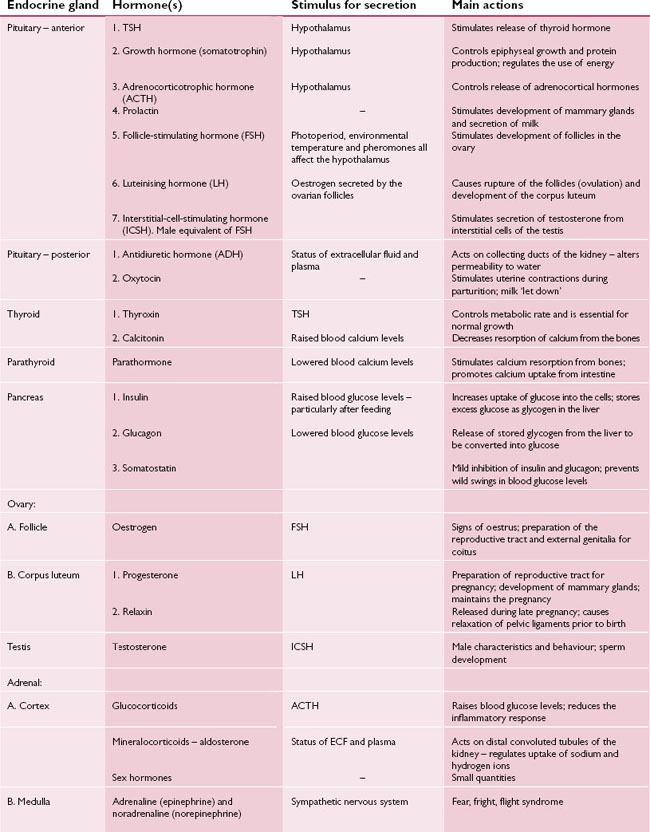 Your metabolism tends to slow down. So you might gain weight even though you haven’t changed how you eat or exercise. Hormonal shifts also explain, at least in part, why you’re more likely to have heart disease, osteoporosis, and type 2 diabetes as you age.
Your metabolism tends to slow down. So you might gain weight even though you haven’t changed how you eat or exercise. Hormonal shifts also explain, at least in part, why you’re more likely to have heart disease, osteoporosis, and type 2 diabetes as you age.
No matter how old you are, stress, infections, and being around certain chemicals can also mess with parts of your endocrine system. And genetics or lifestyle habits can increase your chances of an endocrine disorder like hypothyroidism, diabetes, or osteoporosis.
- Acromegaly. Sometimes the pituitary gland makes too much growth hormone and your bones get bigger. It usually affects your hands, feet, and face. It usually starts in middle age.
- Adrenal insufficiency. When you have this, your adrenal glands don’t make enough of certain hormones, like cortisol, which controls stress.
- Cushing’s disease. In this, your body makes too much cortisol.
 You could gain weight, get stretch marks, bruise easily at first, then get weakened muscles and bones and possibly develop a hump on your upper back.
You could gain weight, get stretch marks, bruise easily at first, then get weakened muscles and bones and possibly develop a hump on your upper back. - Hyperthyroidism. This is when your thyroid gland makes more hormones than your body needs. You might hear it called overactive thyroid. It makes your system run fast and you might feel nervous, lose weight, and have a rapid heartbeat or trouble sleeping.
- Hypothyroidism. When your body doesn’t make enough thyroid hormone, your system slows down. You might feel tired, gain weight, have a slow heartbeat, and get joint and muscle pains.
- Hypopituitarism. Sometimes your pituitary gland doesn’t make enough of certain hormones and your adrenal and thyroid glands can’t work right.
- Multiple endocrine neoplasia. This is a group of disorders that affect your endocrine system. It causes tumors on at least two endocrine glands or in other organs and tissues.

- Polycystic ovary syndrome. An imbalance of reproductive hormones can cause your ovaries to either not make an egg or not release it during ovulation. This can throw off your periods, cause acne, and make hair to grow on your face or chin.
- Precocious puberty. When glands that control reproduction don’t work properly, some kids start puberty abnormally early — around 8 in girls and 9 in boys.
Top Picks
The Endocrine System and Glands of the Human Body: Function and Disorders
Written by Barbara Brody
- What Is the Endocrine System?
- What Is a Gland?
- Endocrine System Functions
- Parts of the Endocrine System
- Health Issues
- Endocrine System Disorders
- More
The endocrine system is a network of glands in your body that make the hormones that help cells talk to each other. They’re responsible for almost every cell, organ, and function in your body.
They’re responsible for almost every cell, organ, and function in your body.
If your endocrine system isn’t healthy, you might have problems developing during puberty, getting pregnant, or managing stress. You also might gain weight easily, have weak bones, or lack energy because too much sugar stays in your blood instead of moving into your cells where it’s needed for energy.
A gland is an organ that makes and puts out hormones that do a specific job in your body. Endocrine and exocrine glands release the substances they make into your bloodstream.
Your endocrine system:
- Makes hormones that control your moods, growth and development, metabolism, organs, and reproduction
- Controls how your hormones are released
- Sends those hormones into your bloodstream so they can travel to other body parts
Many glands make up the endocrine system. The hypothalamus, pituitary gland, and pineal gland are in your brain. The thyroid and parathyroid glands are in your neck. The thymus is between your lungs, the adrenals are on top of your kidneys, and the pancreas is behind your stomach. Your ovaries (if you’re a woman) or testes (if you’re a man) are in your pelvic region.
The thymus is between your lungs, the adrenals are on top of your kidneys, and the pancreas is behind your stomach. Your ovaries (if you’re a woman) or testes (if you’re a man) are in your pelvic region.
- Hypothalamus. This organ connects your endocrine system with your nervous system. Its main job is to tell your pituitary gland to start or stop making hormones.
- Pituitary gland. This is your endocrine system’s master gland. It uses information it gets from your brain to tell other glands in your body what to do. It makes many important hormones, including growth hormone; prolactin, which helps breastfeeding moms make milk; antidiuretic hormone(ADH) (vasopressin), which controls blood pressure and helps control body water balance through its effect on the kidney, corticotropin /ACTH: Adrenocorticotrophic hormone. which stimulates the adrenal gland to make certain hormones, thyroid-stimulating hormone (TSH), which stimulates the production and secretion of thyroid hormones, oxytocin which helps in milk ejection during breast feeding; and luteinizing hormone, which manages estrogen in women and testosterone in men.

- Pineal gland. It makes a chemical called melatonin that helps your body get ready to go to sleep.
- Thyroid gland. This gland makes thyroid hormone, which controls your growth and metabolism. If this gland doesn’t make enough (a condition called hypothyroidism), everything happens more slowly. Your heart rate might slow down. You could get constipated. And you might gain weight. If it makes too much (hyperthyroidism), everything speeds up. Your heart might race. You could have diarrhea. And you might lose weight without trying. The thyroid gland also produces the hormone calcitonin, which may contribute to bone strength by helping calcium to be incorporated into bone.
- Parathyroid. This is a set of four small glands behind your thyroid. They play a role in bone health. The glands control your levels of calcium and phosphorus.
- Thymus. This gland makes white blood cells called T-lymphocytes that fight infection and are crucial as a child’s immune system develops.
 The thymus starts to shrink after puberty.
The thymus starts to shrink after puberty. - Adrenals. Best known for making the “fight or flight” hormone adrenaline (also called epinephrine), these two glands also make hormones called corticosteroids. They affect your metabolism heart rate, oxygen intake, blood flow, and sexual function, among other things.
- Pancreas. This organ is part of both your digestive and endocrine systems. It makes digestive enzymes that break down food. It also makes the hormones insulin and glucagon. These ensure you have the right amount of sugar in your bloodstream and your cells.
- If you don’t make insulin, which is the case for people with type 1 diabetes, your blood sugar levels can get dangerously high. In type 2 diabetes, the pancreas usually makes some insulin but not enough.
- Ovaries. In women, these organs make estrogen and progesterone. These hormones help develop breasts at puberty, regulate the menstrual cycle, and support a pregnancy.

- Testes. In men, the testes make testosterone. It helps them grow facial and body hair at puberty. It also tells the penis to grow larger and plays a role in making sperm.
As you get older, it’s natural to notice some things related to your endocrine system. Your metabolism tends to slow down. So you might gain weight even though you haven’t changed how you eat or exercise. Hormonal shifts also explain, at least in part, why you’re more likely to have heart disease, osteoporosis, and type 2 diabetes as you age.
No matter how old you are, stress, infections, and being around certain chemicals can also mess with parts of your endocrine system. And genetics or lifestyle habits can increase your chances of an endocrine disorder like hypothyroidism, diabetes, or osteoporosis.
- Acromegaly. Sometimes the pituitary gland makes too much growth hormone and your bones get bigger. It usually affects your hands, feet, and face.
 It usually starts in middle age.
It usually starts in middle age. - Adrenal insufficiency. When you have this, your adrenal glands don’t make enough of certain hormones, like cortisol, which controls stress.
- Cushing’s disease. In this, your body makes too much cortisol. You could gain weight, get stretch marks, bruise easily at first, then get weakened muscles and bones and possibly develop a hump on your upper back.
- Hyperthyroidism. This is when your thyroid gland makes more hormones than your body needs. You might hear it called overactive thyroid. It makes your system run fast and you might feel nervous, lose weight, and have a rapid heartbeat or trouble sleeping.
- Hypothyroidism. When your body doesn’t make enough thyroid hormone, your system slows down. You might feel tired, gain weight, have a slow heartbeat, and get joint and muscle pains.
- Hypopituitarism. Sometimes your pituitary gland doesn’t make enough of certain hormones and your adrenal and thyroid glands can’t work right.

- Multiple endocrine neoplasia. This is a group of disorders that affect your endocrine system. It causes tumors on at least two endocrine glands or in other organs and tissues.
- Polycystic ovary syndrome. An imbalance of reproductive hormones can cause your ovaries to either not make an egg or not release it during ovulation. This can throw off your periods, cause acne, and make hair to grow on your face or chin.
- Precocious puberty. When glands that control reproduction don’t work properly, some kids start puberty abnormally early — around 8 in girls and 9 in boys.
Top Picks
Functions of the endocrine glands in the human body.
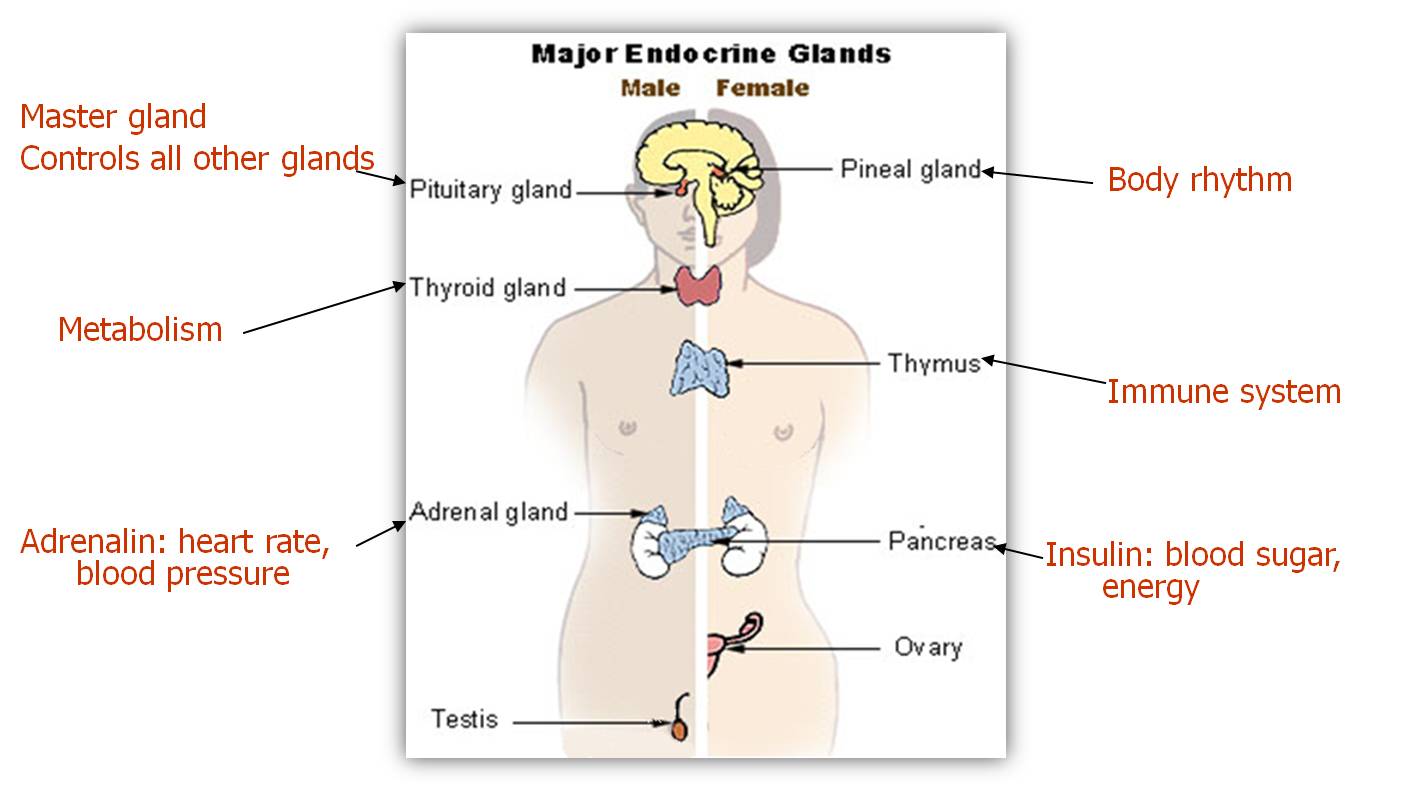 Tests for hormones and their interpretation.
Tests for hormones and their interpretation.
The human endocrine system consists of organs called endocrine glands, which regulate the work of the whole organism by releasing biologically active substances – hormones – into the circulatory system. These substances perform paramount functions in the body: they help maintain homeostasis, control growth and development, participate in metabolic processes, are responsible for responding to changes in environmental conditions, and regulate the reproductive system.
Endocrine glands include:
Thyroid. Produces hormones – thyroxine (T4), triiodothyronine (T3), calcitonin. These hormones are involved in metabolism, increasing its intensity, regulate growth processes in the body, increase the level of consumption of vital oxygen by organs and tissues.
Parathyroid glands. They produce parathyroid hormone that regulates the level of calcium in the body, which is necessary for the normal functioning of the motor apparatus and nervous system.
Thymus (thymus). This organ occupies a central place in the human immune system, not without reason the word “thymus” is translated from ancient Greek as “life force”. The thymus produces T-lymphocytes – immune cells that provide antiviral and antitumor protection of the body. It secretes a number of hormones into the blood: thymalin, thymosin, IGF-1, thymopoietin, which are responsible for the functional activity of the immune system.
Adrenals. They produce the so-called stress hormone – adrenaline, which is involved in the body’s response to external stressful situations. When a large amount of adrenaline is released into the blood, breathing quickens, the heart rate increases, blood vessels constrict, and the pupils dilate.
Pancreas. Is the main source of enzymes for the digestion of fats, proteins and carbohydrates. It produces the hormones insulin, which lowers the level of glucose in the blood, and glucagon, on the contrary, increases it.
Gonads. In women, the ovaries; in men, the testes. The hormones produced by these glands are responsible for reproductive function.
Pituitary and hypothalamus. Form the hypothalamic-pituitary system. The pituitary gland produces hormones that control almost the entire endocrine system. Among them, the most important is the growth hormone – somatotropin, which affects the growth of bones, cartilage and muscles.
Epiphysis (pineal body, or pineal gland). The organ performs important functions: it slows down growth hormones, inhibits the development of tumors, and affects sexual development. It produces antidiuretic hormone (ADH), which controls the water balance of the body, oxytocin, which is responsible for muscle contraction, and melatonin, a hormone that controls the sequence of sleep phases.
Based on the foregoing, we can follow the conclusion that the importance of the endocrine system cannot be overestimated – its activity extends to all organs of the body and all processes occurring in it. Therefore, all deviations from the norm in the operation of this system require immediate medical intervention.
Therefore, all deviations from the norm in the operation of this system require immediate medical intervention.
Symptoms of hormonal imbalance
There are a lot of symptoms of malfunctioning of the endocrine glands, among them are:
- Irregular or absent menstruation in women;
- Miscarriage or infertility;
- Loss of sexual desire;
- Weight gain;
- Eruptions on the body, acne;
- Deterioration of hair and nails;
- Sleep disturbances, lethargy, increased fatigue;
- Emotional instability: tearfulness, irascibility, nervousness;
- The development of osteoporosis is a disease that leads to brittle bones.
It is worth noting that none of the above symptoms is a direct confirmation of the presence of a hormonal imbalance, but only a possible consequence. To make an accurate diagnosis, it is necessary to undergo a complete examination by an endocrinologist, which includes the method of functional diagnostics (ultrasound, MRI), as well as laboratory blood tests, which will be discussed below.
How is blood tested for hormones?
A blood test for hormones is the most indicative and informative method for detecting any pathologies in the work of the endocrine glands. However, it is important to consider that many factors influence the hormonal background: the time of day, the menstrual cycle in women, and medication. For this reason, the preparation for taking tests for a hormonal study must be taken with all seriousness. If this is neglected, then the result of the analysis may be incorrect and, at best, it will have to be retaken, and at worst, an incorrect diagnosis may be made on its basis and the wrong treatment may be prescribed, which can lead to irreparable consequences.
To prepare for donating blood for hormones, the following general rules must be observed:
- On the eve of the test, you should give up physical activity, try to avoid stressful situations, stop any physiotherapy procedures, exclude oral contraceptives, alcohol, fatty foods and products containing iodine.
 It is also recommended to postpone the ECG, ultrasound, x-ray examination for a while after the test.
It is also recommended to postpone the ECG, ultrasound, x-ray examination for a while after the test. - An important point is taking medications – it is necessary to notify the doctor who ordered the hormonal blood test about the fact of taking medications. He will decide whether to cancel or continue taking medications at the time of the test.
- An analysis for a hormonal study is given strictly on an empty stomach. Therefore, it is recommended to stop eating 12 hours before blood sampling.
- In the morning, before the test, it is forbidden to chew gum, drink tea and smoke.
- Just before donating blood, rest for 15-10 minutes.
- Women need to take into account their menstrual cycle, because. it is possible to examine the blood for some hormones only in certain periods of this cycle.
- To track the dynamics of the levels of certain hormones, a second analysis is required. It is rented at approximately the same time as the previous one, in compliance with all the above rules.

Blood sampling for analysis is carried out in the first half of the day in the morning. The biomaterial is taken from the cubital vein.
Explanation of tests
Thyroid hormones
Triiodothyronine , or T3 – gives a general assessment of the work of the thyroid gland. This hormone is determined both in free form (norm: from 2.6 to 5.7 pmol/l.), And in the serum state, (general form; norm: from 1.3 to 2.7 nmol/l). An increase in the indicator indicates the use of narcotic substances: methadone, heroin, amphetamine, HIV infection, kidney failure, hyperthyroidism. The decrease was established with the use of androgens, danazol, dexamethasone, propranolol.
Thyroxine , or T4 – regulates energy metabolism in the body. Norm: 10.8 – 22.0 pmol / l. A low level is observed with hyperthyroidism, hemolysis. Elevated levels – when taking oral contraceptives, methodone, heroin, estrogen.
Thyroglobulin , or Tg – is prescribed for suspected malignant neoplasms.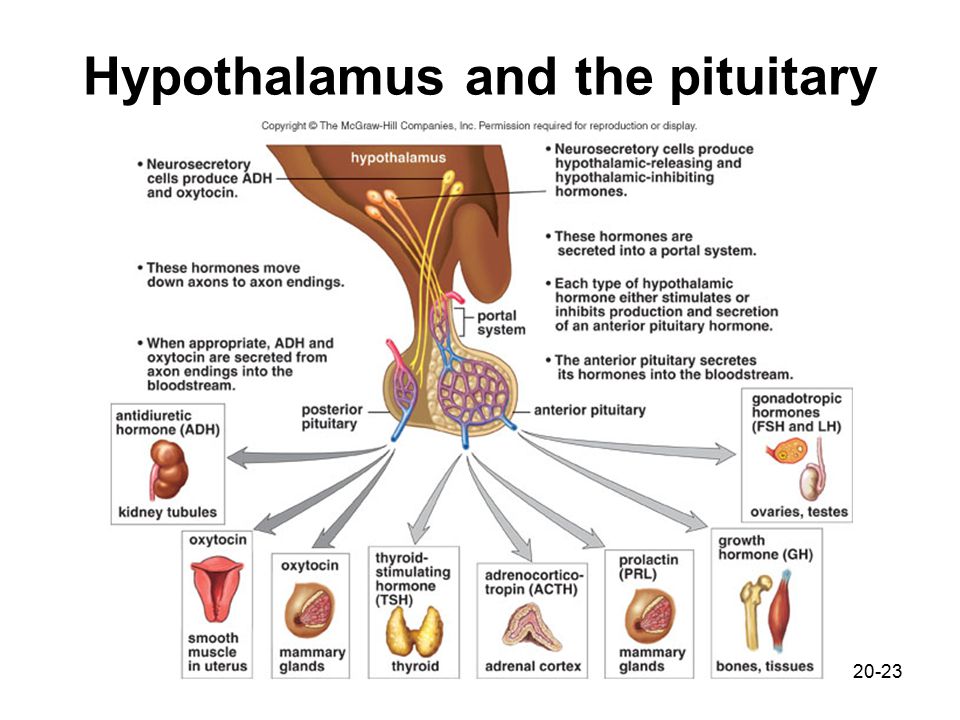 Norm: < 55 ng / ml.
Norm: < 55 ng / ml.
Antibodies to thyroglobulin – are prescribed for suspected autoimmune thyroid diseases. Norm: 0 – 18 U / ml.
Microsomal antibodies are the most accurate indicator of the presence of autoimmune diseases. A deviation from the norm < 5.6 U / ml is proof of the aggression of the immune system to its own body.
Thyroxine-binding globulin , or TSH, is responsible for the transport of the hormones T3 and T4. Norm: from 16.8 to 22.5 mcg / ml. An increased indicator may indicate pregnancy, a lower one – with cirrhosis of the liver.
Adrenal hormones
Cortisol – regulates carbohydrate metabolism. Norm: from 230 to 750 nm / l. A low rate may be the result of chronic adrenal insufficiency, and a high one may indicate oncology or adenoma.
Aldosterone – responsible for the water-salt balance. Norms: in a horizontal position 17.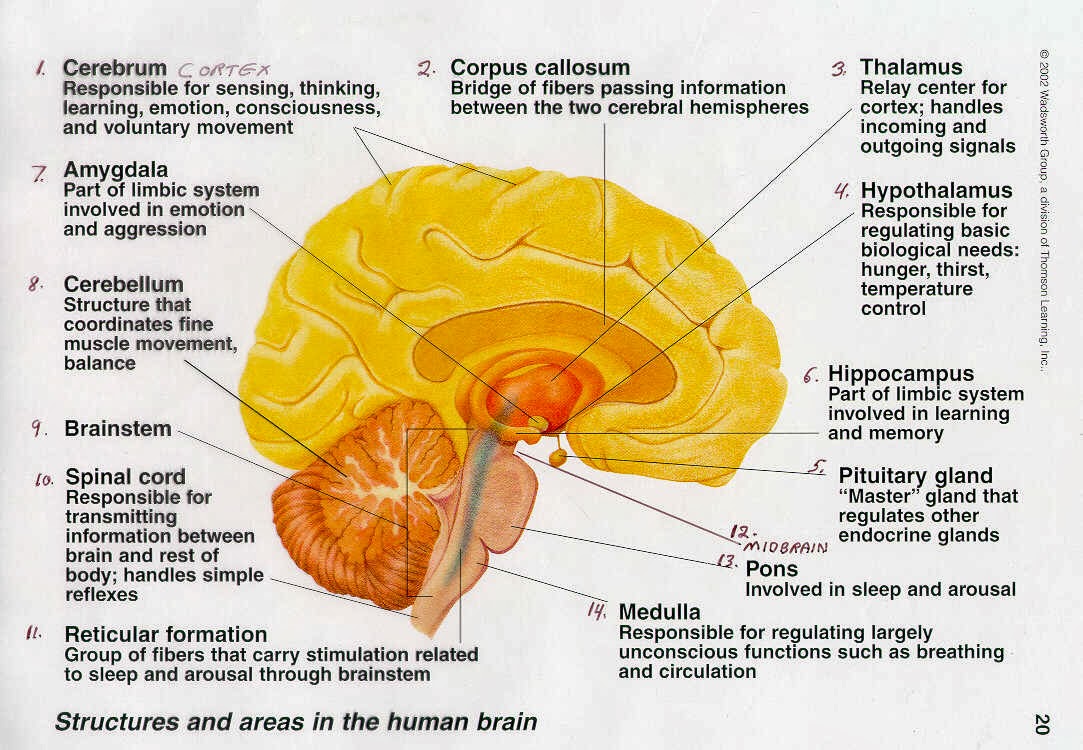 6-230.2 pg / ml; in a vertical position 25.2-392 pg / ml. Elevated levels of the hormone in the blood usually indicate an adrenal tumor.
6-230.2 pg / ml; in a vertical position 25.2-392 pg / ml. Elevated levels of the hormone in the blood usually indicate an adrenal tumor.
Norepinephrine and epinephrine – normalize heart rate, blood pressure, form glucose levels. Norms: from 1.92 to 2.46 nm / l for adrenaline, from 0.62 to 3.23 nm / l for norepinephrine. An increase in indicators indicates kidney disease, Itsenko-Cushing’s syndrome, emotional and physical workload of the body, a decrease indicates pathology of the hypothalamus.
Sex hormones
Estradiol – is responsible for the production of germ cells and the proper development of pregnancy. The norm in the first phase of the menstrual cycle (follicular phase) is from 200 to 285 pm/l, the norm in the corpus luteum phase (luteal phase) is from 440 to 575 pi/l, during menopause from 50 to 133 pm/l. A lower indicator may indicate a tumor in the ovaries, an increased indicator – with their insufficient functioning.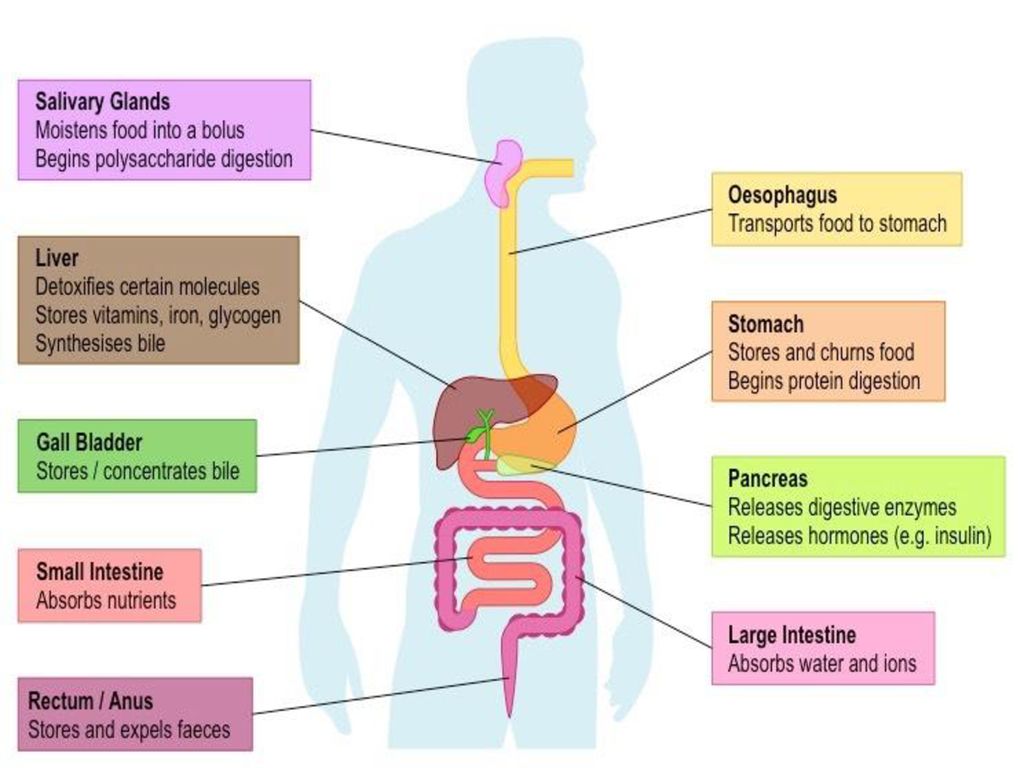
Testosterone is the main male hormone. Responsible for the formation of secondary sexual characteristics, stimulates the growth of muscle mass and bones. Norms: for men – 2 -10 ng / ml, for women – 0.2 – 1 ng / l.
Progesterone – ensures the proper development of the genital organs in women. The norm in the first phase of the menstrual cycle (follicular phase) is from 1 to 2.2 nm / l, the norm in the corpus luteum phase (luteal phase) is from 23 to 30 nm / l, during menopause from 1 to 1.8 nm / l . An increase in the indicator is observed with tumors of the adrenal cortex, a decrease – with ovarian sclerosis.
Pituitary hormones
Thyroid stimulating hormone , or TSH, stimulates the production of the main thyroid hormones, so deviations from the reference values indicate thyroid dysfunction. Norm: 0.4-4.0 honey / l.
Somatotropic hormone , or STH – a hormone of the anterior pituitary gland, is responsible for stimulating the mouth of bones, muscle mass and other organs of the human body.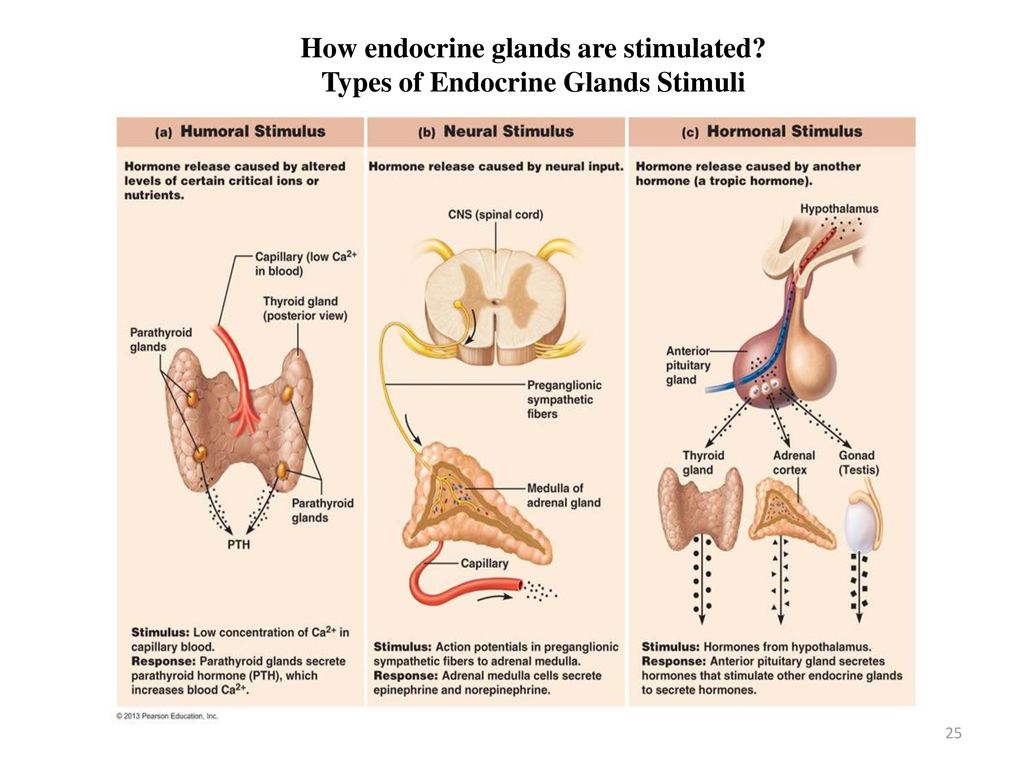 Norm: < 10.0 ng / ml. Exceeding the value of the established norm indicates gigantism, acromegaly.
Norm: < 10.0 ng / ml. Exceeding the value of the established norm indicates gigantism, acromegaly.
Adrenocorticotropic hormone , or ACTH – stimulates the synthesis of hormones in the adrenal cortex. Norm: < 46 pg / ml. Deviations from the norm are observed in Itsenko-Cushing's syndrome, Addison's disease, as well as in other disorders of the adrenal glands.
Prolactin is a hormone responsible for the growth of the mammary glands in women and the functioning of the prostate in men. The norm for the stronger sex is 100 – 265 mcg / l, for the fair sex – from 130 to 540 skg / l during the childbearing period.
Follicle-stimulating hormone , FSH – stimulates the growth of follicles in women, is responsible for the functioning of the seminiferous tubules in men. The norm in women: in the first phase of the menstrual cycle (follicular phase) from 1.37 – 9.90 IU / l, in the corpus luteum phase (luteal phase) from 1. 09 – 9.20 IU / ml, during menopause from 29, 5 to 55 mU / l, with ovulation from 2.7 to 6.7 mU / ml. The norm for men: 0.95 – 11.95 mU / ml.
09 – 9.20 IU / ml, during menopause from 29, 5 to 55 mU / l, with ovulation from 2.7 to 6.7 mU / ml. The norm for men: 0.95 – 11.95 mU / ml.
Luteinizing hormone , or LH – stimulates the production of testosterone in men, progesterone in women. Normal values for men: from 1.14 to 8.75 mU / ml. Norm for women: in the follicular phase from 1.68 to 15.00 mU / ml, in the ovulatory phase from 21.90 – 56.60 mU / ml, in the luteal phase: 0.61 – 16.30 mU / ml, in postmenopausal women from 14.20 – 52.30 mU / ml. Deviations from normal values in both sexes indicate dysfunction of the gonads.
Human glands – classification and functions
4.3
Average score: 4.3
Total ratings received: 1281.
4.3
Average score: 4.3 90 003
Total ratings received: 1281.
Human glands are responsible for the regulation of physiological processes. These are specialized organs that secrete active substances. We talk about the types of human glands and their functions in this article.
We talk about the types of human glands and their functions in this article.
The material was prepared jointly with the teacher of the highest category Shcherban Larisa Stepanovna.
Experience as a biology teacher – more than 19 years.
Species
Hormones are biologically active organic substances that bind to cell receptors and affect their vital functions of the body. Hormones promote growth and development, regulate life processes. A secret is a liquid containing active substances or waste products of a cell. Secrets are secreted on the surface of organs or in the cavity, hormones are released into the blood.
Classification of glands depending on the secreted fluids includes three types:
- endocrine or endocrine glands – secreted hormone enters the blood;
- exocrine or external secretion glands – the secret is secreted on the surface of organs or in their cavity, they have ducts;
- mixed secretion – glands secrete hormones into the blood and secretions into the ducts.

Endocrine glands, unlike exocrine glands, do not have ducts; hormones are secreted into the blood directly from the cells. Glands of mixed secretion have both ducts and secretory cells.
Endocrine glands
Endocrine glands secrete hormones. Their main function is the humoral regulation of human physiology.
Rice. 1. Endocrine glands.
Glands related to the endocrine system are described in the table.
Iron | Location | Secreted hormone | What is responsible for |
Pituitary | At the base of the brain, associated with the hypothalamus | Somatotropin | Promotes body growth |
Thyrotropin | Regulates the thyroid gland | ||
Adrenocorticotropin | Stimulates the adrenal cortex | ||
Prolactin | Regulates lactation | ||
Gonadotropic hormones | Influence the functioning of the gonads | ||
Epiphysis or pineal gland | Midbrain | Melatonin | Regulates biorhythms |
Oxytocin | Regulates labor in women | ||
Serotonin | One of the main neurotransmitters that promotes the transmission of nerve impulses | ||
Thyroid | Under the larynx | Iodine containing hormones | Regulate metabolism |
Calcitonin | Incorporates calcium and phosphate into bone tissue preventing skeletal wear | ||
Parathyroid or parathyroid glands | At the posterior surface of the thyroid gland | Parathormone | Regulates blood calcium levels |
Thymus or thymus gland | Behind the sternum | Timalin, thymosin, IGF-1, thymopoietin | Regulate the immune system, participate in the differentiation of T-lymphocytes |
Adrenals | At the top of the kidneys | Adrenaline | Affects the heart and blood vessels, helps to respond quickly in stressful situations |
Cortisol | Regulates metabolism | ||
Aldosterone | Regulates the water-salt balance |
The thymus is greatly reduced in size towards the end of life.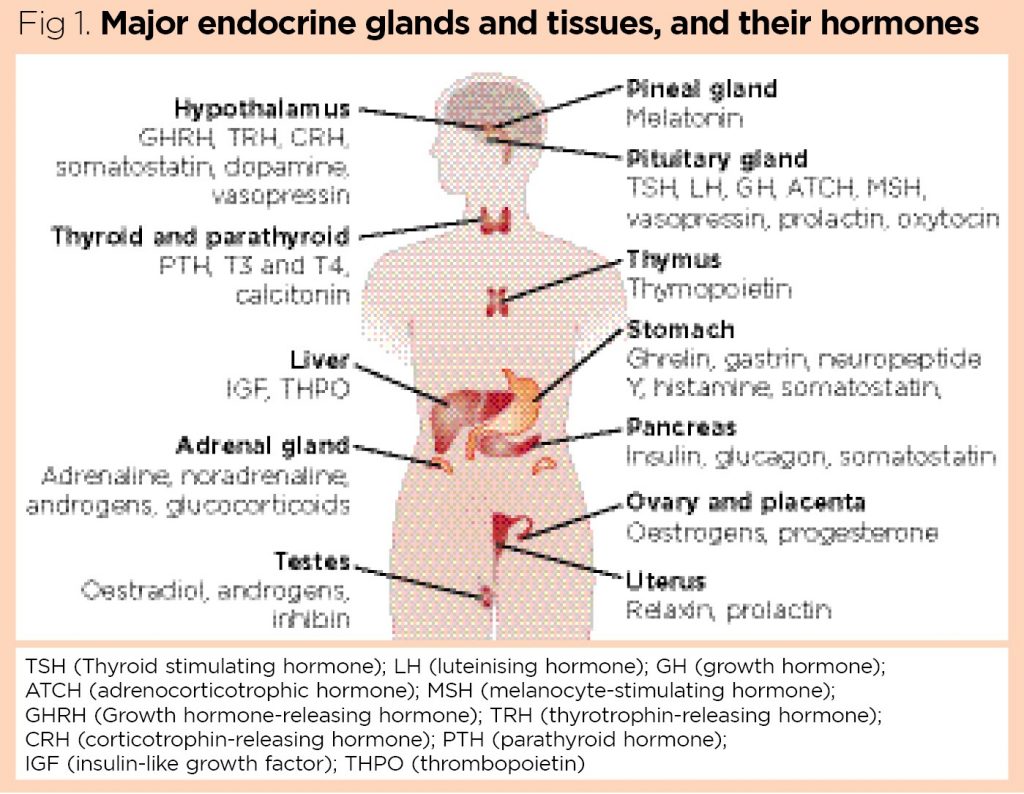 Most developed in children.
Most developed in children.
Exocrine glands
Endocrine or exocrine glands include:
- salivary – are in the oral cavity, produce saliva;
- gastric – secretes gastric juice, located in the epithelium of the stomach;
- intestinal – located in the small intestine, secrete enzymes, leukocytes, mucus, amino acids that promote digestion;
- liver – located on the right side of the abdominal cavity, secretes bile, which promotes the breakdown of fats;
- greasy – located in the dermis, secrete sebum, which makes the skin elastic and waterproof;
- sweat – located in the dermis, they secrete sweat, consisting of water, mineral salts, urea, which helps to cool the skin surface;
- lacrimal – located in the upper outer corner of the eye, secrete tears that wet the eyeball;
- milky – located at the nipples of a woman, they secrete milk.

Rice. 2. Exocrine glands.
The liver is the largest gland of vertebrates.
Glands of mixed secretion
Glands of mixed secretion include the digestive gland – the pancreas – and the gonads &ndash: ovaries and testicles.
Rice. 3. Glands of mixed secretion.
The pancreas secretes pancreatic juice, which contains enzymes and promotes the digestion of food, as well as a number of hormones – glucagon, insulin, somatostatin, which affects carbohydrate metabolism and blood sugar levels.
Sex glands do not produce secrets, but sex cells. The ovaries produce eggs, and the testicles produce sperm. In addition, the sex glands release hormones into the blood. There are two groups of female hormones:
- estrogens affecting the functioning of the uterus;
- gestagens regulating the menstrual cycle, pregnancy, childbirth.
The testicles, the male gonads, produce androgens responsible for secondary sexual characteristics in men.

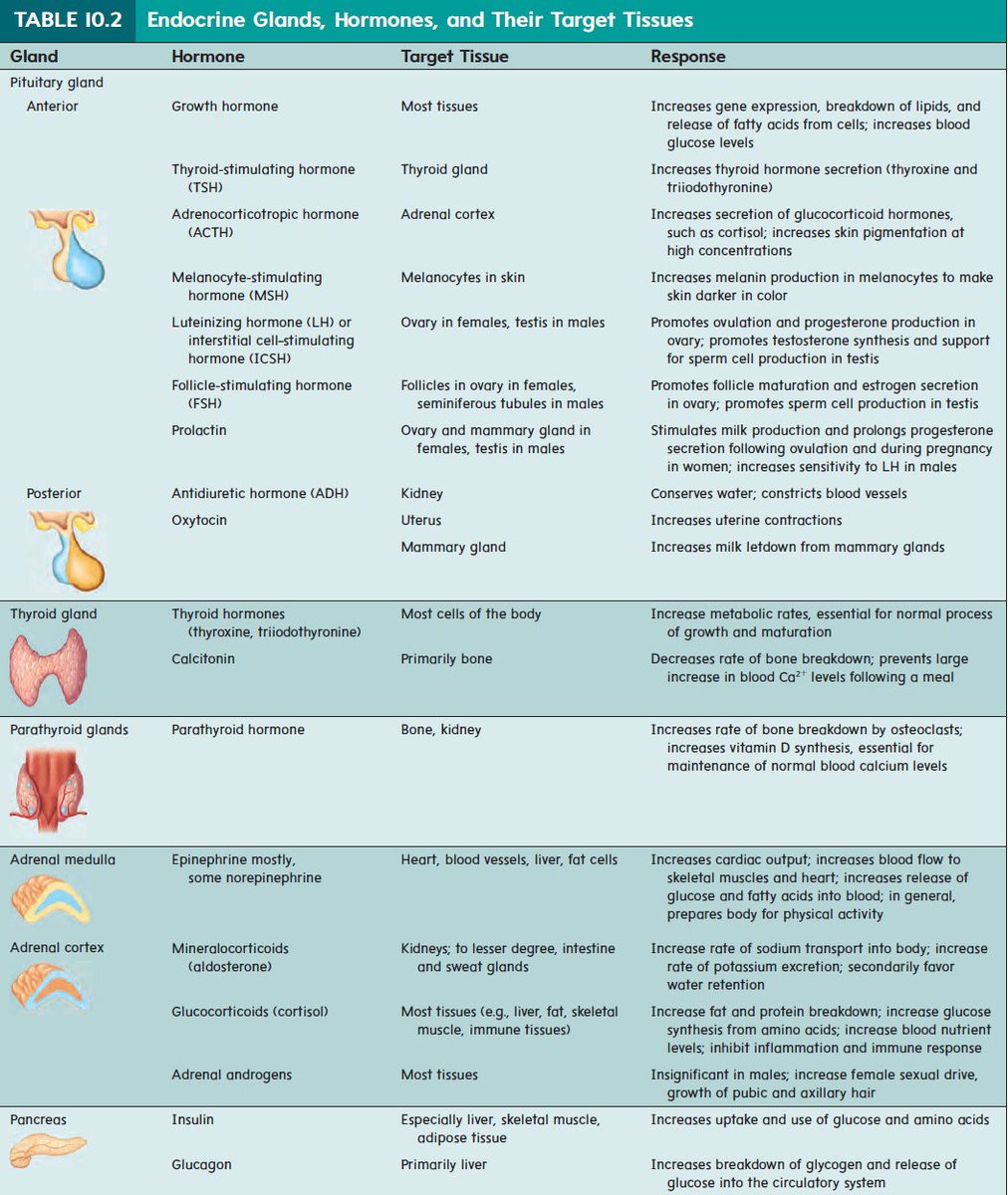 It makes many important hormones, including growth hormone; prolactin, which helps breastfeeding moms make milk; antidiuretic hormone(ADH) (vasopressin), which controls blood pressure and helps control body water balance through its effect on the kidney, corticotropin /ACTH: Adrenocorticotrophic hormone. which stimulates the adrenal gland to make certain hormones, thyroid-stimulating hormone (TSH), which stimulates the production and secretion of thyroid hormones, oxytocin which helps in milk ejection during breast feeding; and luteinizing hormone, which manages estrogen in women and testosterone in men.
It makes many important hormones, including growth hormone; prolactin, which helps breastfeeding moms make milk; antidiuretic hormone(ADH) (vasopressin), which controls blood pressure and helps control body water balance through its effect on the kidney, corticotropin /ACTH: Adrenocorticotrophic hormone. which stimulates the adrenal gland to make certain hormones, thyroid-stimulating hormone (TSH), which stimulates the production and secretion of thyroid hormones, oxytocin which helps in milk ejection during breast feeding; and luteinizing hormone, which manages estrogen in women and testosterone in men. You could get constipated. And you might gain weight. If it makes too much (hyperthyroidism), everything speeds up. Your heart might race. You could have diarrhea. And you might lose weight without trying. The thyroid gland also produces the hormone calcitonin, which may contribute to bone strength by helping calcium to be incorporated into bone.
You could get constipated. And you might gain weight. If it makes too much (hyperthyroidism), everything speeds up. Your heart might race. You could have diarrhea. And you might lose weight without trying. The thyroid gland also produces the hormone calcitonin, which may contribute to bone strength by helping calcium to be incorporated into bone.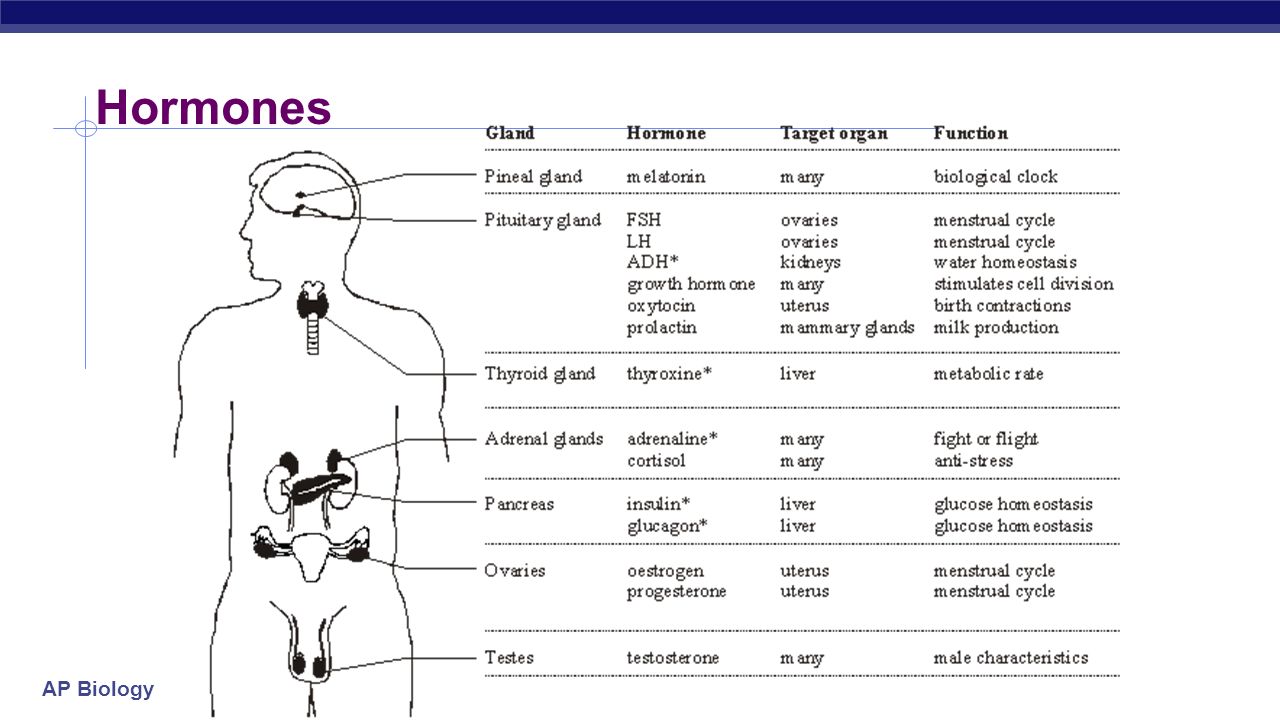
 You could gain weight, get stretch marks, bruise easily at first, then get weakened muscles and bones and possibly develop a hump on your upper back.
You could gain weight, get stretch marks, bruise easily at first, then get weakened muscles and bones and possibly develop a hump on your upper back.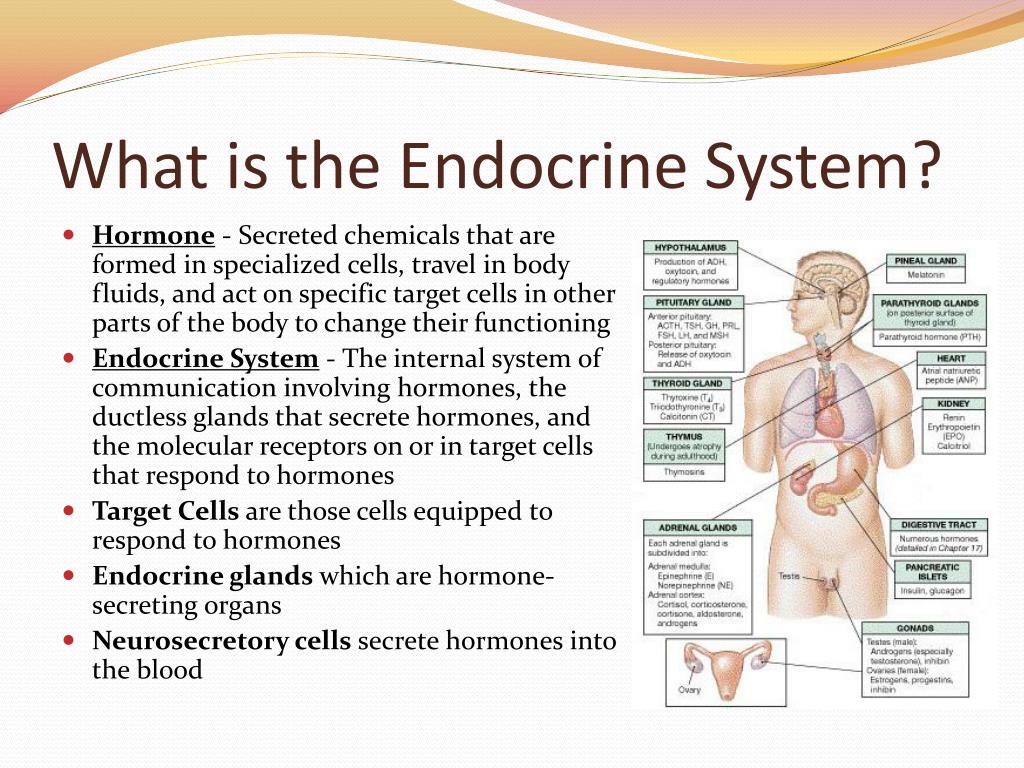
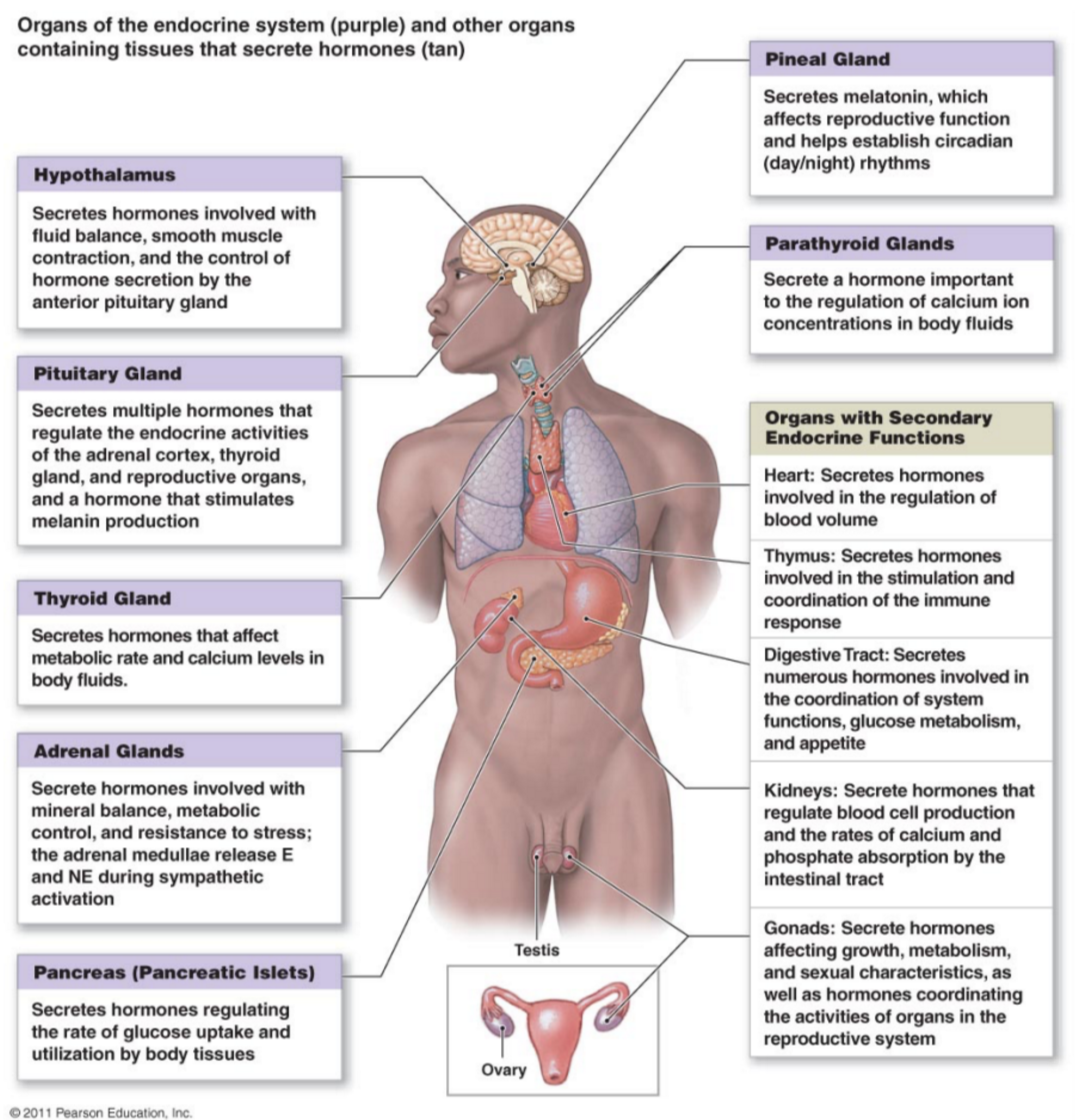
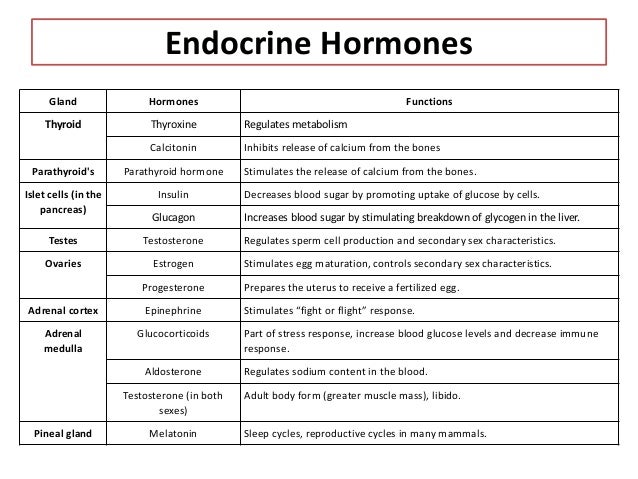 The thymus starts to shrink after puberty.
The thymus starts to shrink after puberty.
 It usually starts in middle age.
It usually starts in middle age.
 It is also recommended to postpone the ECG, ultrasound, x-ray examination for a while after the test.
It is also recommended to postpone the ECG, ultrasound, x-ray examination for a while after the test.
